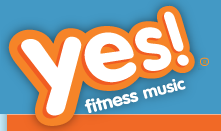
This is the fifth in a series of Blog posts on choreography. Your choreography is your lesson plan. It is helpful to have a lesson plan before you start teaching your class. If you write down your lesson plans, you will eventually end up with your own choreography library that you can refer to as often as you choose. Including a variety of choreography styles in your lesson plan library will set you apart from other instructors who may have a single technique that they tend to repeat over and over again. Your participants will definitely appreciate the variety.
Previous Blog posts featured samples of linear choreography, pyramid choreography, add-on choreography, and the layer technique. This Blog post is about block choreography. Block choreography is my personal favorite because it is so versatile. It can be as simple or as complex as you want. Let’s start out simply, using the same set of 6 basic exercises I used in all the previous choreography samples. The 6 exercises transition easily from one to the next. The exercises are:
- Knee-high jog
- Run tires (like running through tires at football practice)
- Jumping jacks
- Cross-country ski
- Kick forward
- Heel jog
These 6 exercises comprise your first set. In each succeeding set you change something about the exercises. In this example I will change the arm movements, add travel, increase the range of motion, change the impact option, cross the midline of the body and combine two moves.
Change the arm movements:
- Knee-high jog with pumping arms
- Run tires with shoulder blade squeeze
- Jumping jacks clap hands
- Cross-country ski with windshield wiper arms
- Kick forward with triceps extension
- Heel jog with rotator cuff sweep
Add travel:
- Knee-high jog travel backward
- Run tires travel forward
- Jumping jacks travel backward
- Cross-country ski travel forward
- Kick forward travel backward
- Heel jog travel forward
Increase the range of motion:
- Leap forward
- Leap sideways
- Jumping jacks with arms out of the water
- Cross-country ski with full range of motion
- High kick
- Skate kick
Change the impact option:
- Bicycle suspended
- Frog jump neutral position
- Jacks tuck
- Tuck ski
- Seated kick suspended, emphasize quads
- Seated kick suspended, emphasize hamstrings
Cross the mid-line of the body:
- Crossover knees
- Inner thigh lift
- Jacks cross
- Cross-country ski with rotation
- Crossover kick
- Hopscotch
Combine two moves:
- In, in, out, out
- Ski-jacks combo (ski, ski, jack, together)
- One leg kicks forward & back
You can probably think of more ways to vary these 6 exercises on your own. This is simple block choreography. So how do you make it more complex? That will be in my next Blog post!
See you in the pool!







 It’s fun to exercise to music! Music is a great motivator. It helps you maintain a cadence so that you stay on track and achieve the desired intensity. It also makes the workout seem to go faster.
It’s fun to exercise to music! Music is a great motivator. It helps you maintain a cadence so that you stay on track and achieve the desired intensity. It also makes the workout seem to go faster.


